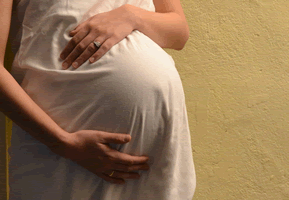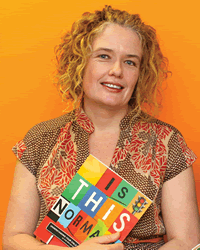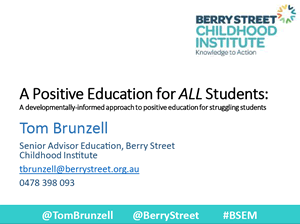 This is Part 1 in a 3 part series about Communicating with children and young people about sexuality.
This is Part 1 in a 3 part series about Communicating with children and young people about sexuality.
Children are wonderfully curious and want to learn all about the world around them. While most parents and carers are comfortable answering questions about Stegosauruses and seashells, conversations about babies and private bits are a little more difficult. Whether you are a parent or an early childhood professional, you are bound to overhear conversations like this one.
Tim (aged 4): “You can be the mum and I will be the dad, and this is our baby.”
Ruby (aged 4): “I know how babies are made.”
Tim: “Do you?”
Ruby: “Yeah! Don’t you know? The Daddy makes a boy baby and
the Mummy makes the girl baby?”
Tim: “Yeah, I knew that, but how does it get in the mummy’s tummy?”
So, what you do now: laugh about the funny things kids say, start worrying about having to give ‘the talk’ at some distant point in the future or stop and take the time to help them make sense of their world?
Answering questions
If children do ask questions about sexuality it is important to look calm and relaxed, even if your heart rate has picked up and your palms are sweaty. All children, especially small children, need to feel comfortable talking to their parents and teachers about anything, especially matters about sexuality and personal safety. Take a deep breath, smile and then answer in a brief, positive, factual and age appropriate way. Try to see these questions from a child’s point of view and as a great opportunity to develop a trusting and open relationship.
When responding to children’s questions:
- Give a brief answer. Two or three or four sentences will do.
- Be positive in both your answer and body language.
- Give an honest and factual answer. Children will be more likely to come to you if they know you are a reliable source of information. They are smart and stories of storks and cabbage patches can be frustrating to a child seeking to learn.
- Use anatomical language. Use the words penis, testicles, bottom, vagina and vulva. Teaching children the correct words for private body parts helps them to communicate clearly and helps to normalise private body parts. It is also part of teaching them very valuable personal safety skills like rules about touch and how to ask for help.
- Give age appropriate answers. Give a little bit of information and let them know they can always come back and ask you more.
Here is just one example of how to respond to 4 year old Tim’s question:
You: “That’s a great question Tim. I am always happy to answer your questions. You need a mum and a dad to make a baby. The mum and the dad have a private grown up cuddle. The dad’s sperm joins with the mother’s tiny egg, inside her body. When the sperm and the egg join together a baby can begin to grow. The baby grows in a special place called a uterus inside the mother’s body. After nine months the baby is ready to be born.”
Tim: “Yeah but, how are girls made? One day the boy’s whizza falls off and then they are a girl!”
You: “A boy’s penis can not fall off. Boys have a penis and testicles and girls have a vulva and vagina. Girls’ and boys’ private body parts are different. They are born that way. If you want to know more about this you can always come and ask me, OK?”
Children may ask more questions about sexual intercourse. As you have more opportunities to talk to your child it is good to gradually build on their knowledge with age appropriate information.
You: “A private grown up cuddle is also called having sex. Sex happens when a man’s penis goes inside a woman’s vagina. When this happens the sperm can then travel from the man’s testicle through his penis and into the woman’s vagina. If the sperm joins with the tiny egg inside the woman’s body, a baby may begin to grow there.”
It can be helpful to find a book that explains fertilisation and birth and bodies in age appropriate ways for children of different ages. Always be sure to teach children that sex is a grown up activity that should only happen in a private place and only if the grown ups want to. There are rules about sex to help keep people safe.
Being prepared
This is not easy for everyone. It is normal for adults to feel unsure about what to say or where to start. To make it easier, prepare yourself by getting information about how to answer questions and respond to behaviours. Many parenting and early childhood websites have advice and information on supporting healthy sexual development.
Ongoing conversations
It is good to have many small conversations about sexuality throughout childhood to establish a level of trust and comfort rather than the one off ‘talk’. It is far better for children to get information from a reliable and trustworthy source than to rely on what they hear and learn in the playground and on the TV or from ‘Dr Google’.
Working together
It is so much easier when parents and early childhood professionals work together to ensure a safe and positive environment that supports a child’s developing sexuality. Parents are the first and most influential teachers of sexuality for their children. Child care services, teachers and health practitioners also have a responsibility to educate and support children’s healthy sexual development.
Quality childcare and education services have policies and make professional development opportunities available to staff to help them feel competent and confident to be able to support children’s sexual development. They are also open to talking with parents and carers when they have questions or concerns. Positive messages about a centre’s policies and programs can be communicated to parents though handbooks and newsletters, meetings and informal talks.
Sexual development is a normal process
It is important to remember that sexual development is a normal and healthy process that all children go through. Having positive conversations about sexuality with children gives them information and experience in talking about these topics in a supported way. It will also help them feel more comfortable and confident in their body. These skills will be vital for them throughout life as they grow and develop and learn to negotiate relationships with friends, health professionals and partners when they are older. Evidence shows that sexuality and relationships education helps to increase children’s safety (Sanderson, 2004) and their sexual health outcomes (Kirby, 2001).
Family Planning Queensland
Family Planning Queensland (FPQ) has publications, resources and services that help parents and carers support their child’s developing sexuality.
FPQ’s Where do I start? early childhood package provides professional development and resourcing mapped to the National Quality Standards for child protection. It is designed to build staff skills and competence as well as develop fun and interactive activities for use in your centre.
The Where do I start? early childhood package consists of:
- Everyone’s got a bottom award winning personal safety children’s story book
- Where do I start? Early childhood DVD and guide
- I have the right to be safe teaching flip chart
- Traffic Lights guide to sexual behaviours brochures (packet of 20)
- 1.5 hour professional development webinar* supporting staff to use personal safety
For more information about early childhood resources visit www.fpq.com.au r email mgrabski@fpq.com.au
References
Kirby, D. (2001). Emerging answers: Research findings on programs to reduce teen pregnancy. Washington, DC: National Campaign to Prevent Teen Pregnancy.
Sanderson, J. (2004). Child-focused sexual abuse prevention programs. Crime and Misconduct Commission Research and Issues Paper Series, No. 5. Brisbane: Crime and Misconduct Commission.
Authors: Holly Brennan and Melanie Grabski
Family Planning Queensland
www.fpq.com.au
This is Part 1 in a 3 part series about Communicating with children and young people about sexuality.
Part 2: Talking about puberty, periods and pimples.
Part 3: “What’s wrong with selfies? Everyone does it” Talking to young people about online and offline relationships.




Sandra S
Thank you for this article. It’s been a long time since I had preschoolers asking questions like this, but it’s always best to talk with them positively and honestly, as you’ve explained, and at the level/age they’re at! They can learn so much at this age, and have so many questions (and some strange ideas!).